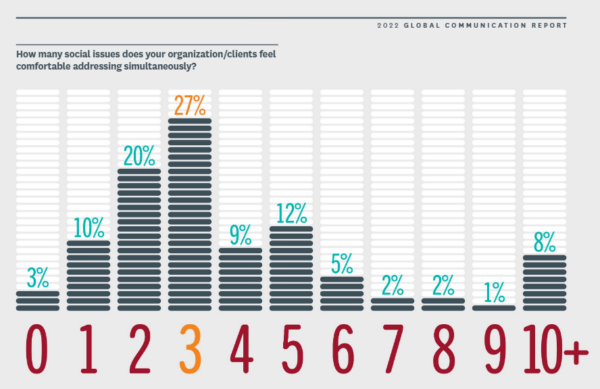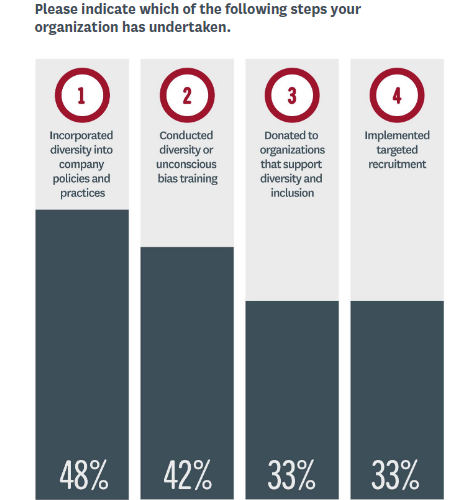Avoiding ‘trust-washing’: How to create action items around social issues
New research from USC’s Annenberg Center breaks down the importance of corporations taking a stand on social issues.

Data has shown that audiences want corporations to take a stand on social issues — but deciding what that looks like in action for your organization can be key to crafting authentic messaging.
New research from the University of Southern California’s Annenberg Center for Public Relations indicates the magic number of social issues companies are addressing at one time is three, followed mostly closely by two. The majority of respondents said they are taking on between one and five topics at once, an ode to quality over quantity.

The Annenberg report notes that it’s most effective for brand managers focus on a few core social topics, presenting Ben & Jerry’s main focus on criminal justice reform as an example.
How to decide which issues are the best fit for your organization
According to the report, most PR pros are pursuing increased public engagement on social issues because of a desire to enact positive social change and because an issue aligns with the company’s values.
When choosing an issue (or three) on which to take a public stance, it’s important to involve your organization’s internal communications team. Company values are often deeply ingrained in a company’s culture, and if the majority of your employees aren’t on board with the stance, it could mean trouble.
In an interview with Time, Stephanie Creary, assistant professor of management at the Wharton School of the University of Pennsylvania, said that the determining factor in many companies’ decisions to take on a social issue is something called “social authorization,” or “the idea that firms and related entities, like boards, are feeling that they are being granted the power from other groups, collectives, or other people in society to engage in societally based work.”
Creary offers the example of California-based firms taking up the mantle of increasing diversity on their boards following the passage of legislation that required them to have at least one female board member. In her analysis, the legislation was the social authorization California companies needed to take broader action.
The Annenberg report shows racial equity, gender equality and climate change as the top three issues with which PR pros predict their clients and own organizations will increase engagement in the next year.
How to create action items for social issues
The action corporations take on value-centric issues can make or break the trust their audiences have in their brand.
Tonia Ries, global executive director for PR firm Edelman, calls “trust-washing” a sign that a company isn’t committed to its purported social goals.
“If you only show up one day a year, to make a statement and pat yourself on the back, you clearly are not authentic, sincere and committed,” Ries said in a January 2022 interview with PR Daily. “And, in fact, you risk having the opposite effect; people will just further write off whatever else you might say next…”
The Annenberg report shows most PR pros say their organizations have taken internal steps to begin addressing their chosen social issues. Forty-eight percent of poll respondents said their organization had “incorporated diversity into company policies and practices,” while 42% reported their organization having “conducted diversity or unconscious bias training.”

About one-third of respondents said their companies had begun donating to organizations that support diversity and inclusion, a move that offers proof of action.
The report also found that inside-out communications is key to promoting action taken on social issues, with more than half of PR pros saying their organizations use employee communications to share news of corporate activism.
PR pros: How does your organization act on your chosen social issues? Is corporate activism a priority for your company? Let us know on Twitter @PRDaily, or in the comments below.







